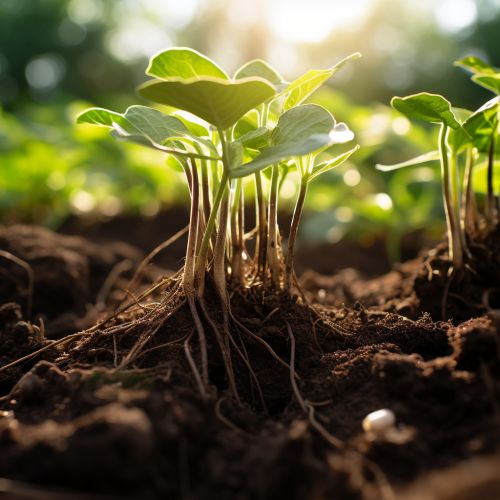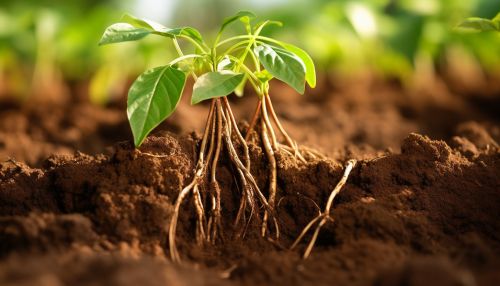Hydrotropism
Overview
Hydrotropism is a type of plant tropism where plant roots exhibit a growth response to water. This phenomenon is an essential survival mechanism for plants, allowing them to navigate their environment and optimize their access to water resources. The roots of a plant will grow towards a water source, a response that is both fascinating and vital for the plant's survival.


Mechanism of Hydrotropism
The exact mechanism of hydrotropism is still a subject of scientific research, but it is known that it involves a complex interplay of various cellular and molecular processes. The root cap, a protective structure at the tip of the root, plays a crucial role in sensing moisture gradients in the soil. This moisture gradient is perceived by the root cap and triggers a signal transduction pathway leading to differential cell growth and root bending.
Role of Auxin
Auxins, a class of plant hormones, are believed to play a significant role in hydrotropism. These hormones are known to regulate various aspects of plant growth and development, including cell elongation, which is a key factor in the directional growth of roots. In the context of hydrotropism, auxins are thought to redistribute within the root in response to a moisture gradient, leading to differential cell elongation and root bending towards the water source.
Hydrotropism vs. Gravitropism
Hydrotropism should not be confused with gravitropism, another form of plant tropism where plant roots grow in the direction of gravitational pull. While both these tropisms involve directional growth of roots, they are triggered by different environmental cues and can sometimes compete with each other. For instance, if a plant is exposed to both a moisture gradient and gravity, the roots may exhibit a combined response, growing diagonally to reach the water source while also following the direction of gravity.
Significance of Hydrotropism
The ability of plant roots to sense and respond to moisture gradients in the soil is of immense ecological and agricultural significance. It allows plants to survive in arid conditions by directing their roots towards underground water sources. This adaptive response can also help plants avoid areas of the soil that are too wet or waterlogged, which can be harmful to the roots. In agriculture, understanding and manipulating hydrotropism could potentially lead to the development of crops that use water more efficiently, which is a critical concern in the face of increasing water scarcity.


Research and Future Directions
While our understanding of hydrotropism has significantly advanced in recent years, many aspects of this complex phenomenon remain to be elucidated. Future research in this field is likely to focus on identifying the molecular players involved in the perception and transduction of moisture signals, as well as the interplay between hydrotropism and other forms of tropism. Such research could have far-reaching implications for plant biology and agriculture, potentially leading to the development of crops with improved water-use efficiency and resilience to drought.
